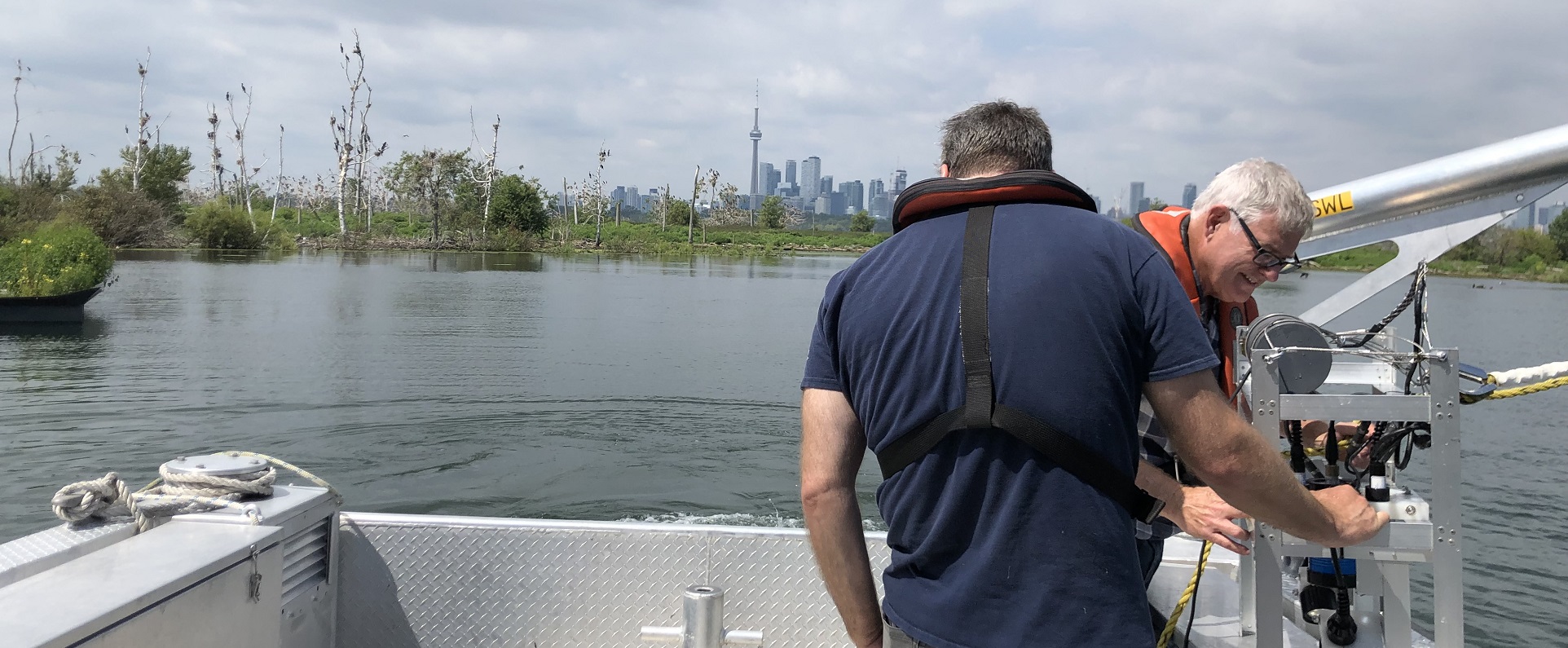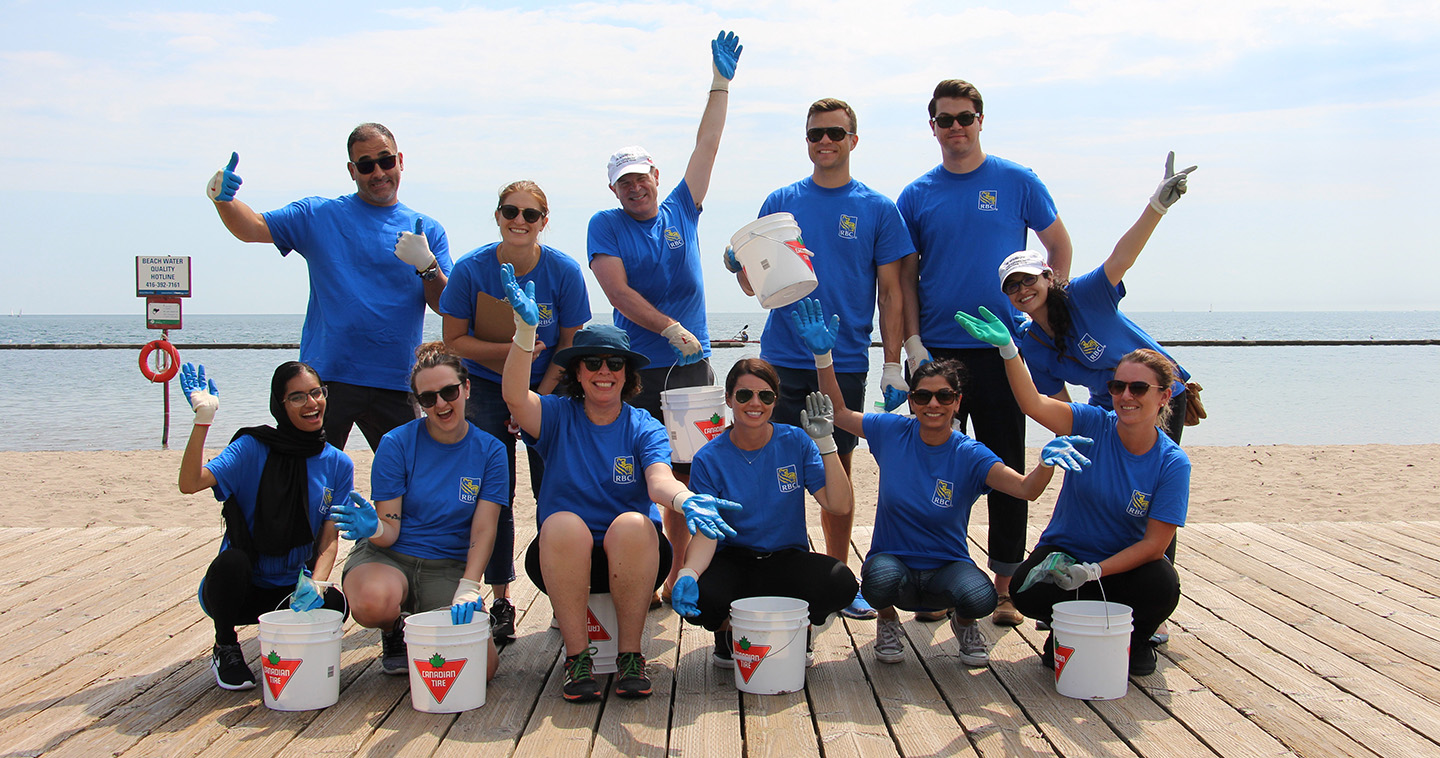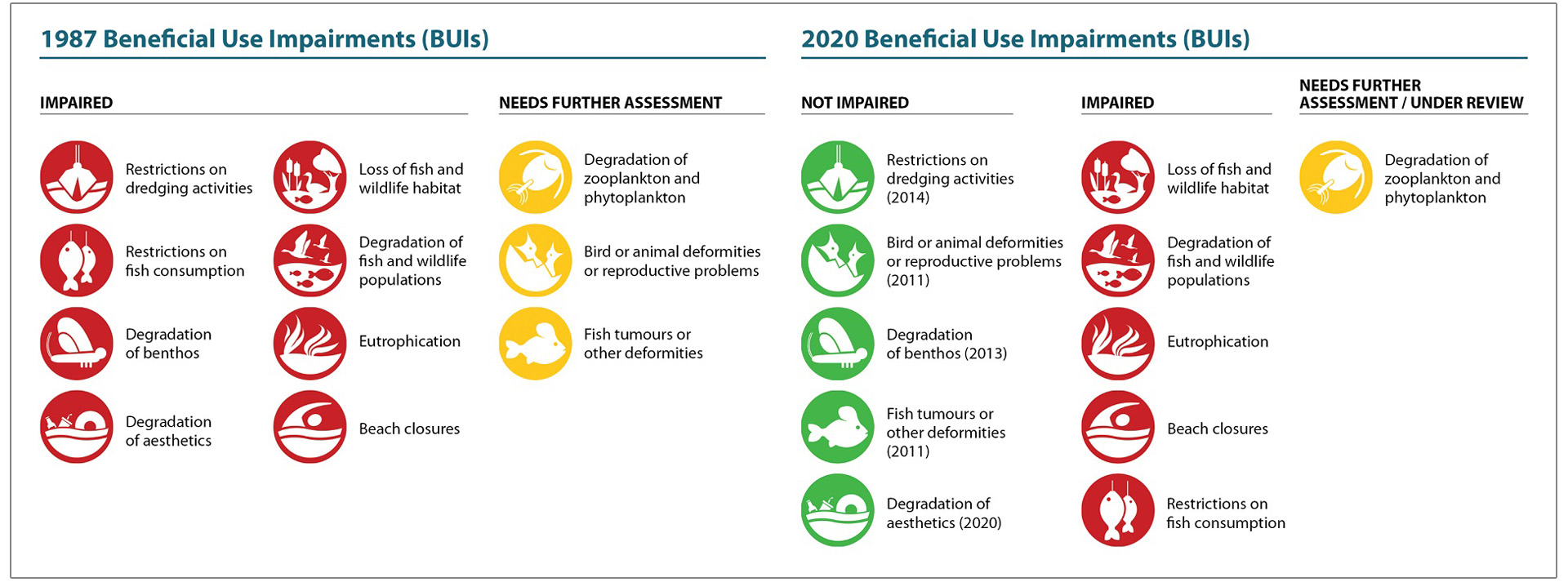On Friday July 10, 2020 the “Degradation of Aesthetics” Beneficial Use Impairment (BUI) was officially re-designated to “not impaired” status in the Toronto and Region Area of Concern (AOC), pursuant to the provisions of the Great Lakes Water Quality Agreement, 2012.
“Degradation of Aesthetics” was one of 11 impairments identified for Toronto and Region when it was identified as an Area of Concern in the late 1980s. The criteria for re-designation were: “Waters free of any substance that produces a persistent objectionable deposit, unnatural colour or turbidity, or objectionable odour.”
Path to Re-designation
Activities that contributed to the re-designation included:
- Implementation of the City of Toronto’s Wet Weather Flow Master Plan
- Shoreline and AOC-wide clean-ups by Toronto and Region Conservation Authority (TRCA), The Great Canadian Shoreline Cleanup, and other groups
- Floating debris removal by Ports Toronto and Harbourfront Centre
- Education and awareness campaigns on littering and waste disposal
- Relocation of industry away from the waterfront, reducing oil slicks that were the greatest contributor to the degradation of aesthetics at the time of designation
Select image below to view full-sized.
Monitoring Aesthetics
Aesthetics monitoring was conducted in 2012, 2013, and 2015. A total of 1,667 samples were observed, from 320 sites throughout the Toronto and Region AOC. Of these:
- 94% of observations showed excellent or good aesthetic condition.
- 80% of observations showed that water was clear, colourless, and odourless, with no excess debris present.
- 1% of observations (20 samples) were assessed as having poor (i.e., unacceptable) aesthetic condition. Of the sites assessed as poor on one or more occasion, none were considered to have persistent, objectionable aesthetic issues.

TRCA team conducts aesthetics monitoring along Toronto waterfront.
Ongoing Actions
Several activities are underway to maintain or improve the aesthetic conditions of waterways within the Toronto and Region Area of Concern. Actions include, but are not limited to:
- Community cleanups such as the Great Canadian Shoreline Cleanup and the Toronto and Region Conservation Foundation’s Look After Where You Live program
- Development of a multi-agency floatables strategy to address floating trash and debris along the waterfront
- Installation of seabins — floating garbage receptacles that suck in trash floating atop the water — along the waterfront
- Trash research and track-down initiatives by the University of Toronto Trash Team

Corporate team participates in Toronto and Region Conservation Foundation’s Look After Where You Live program.

